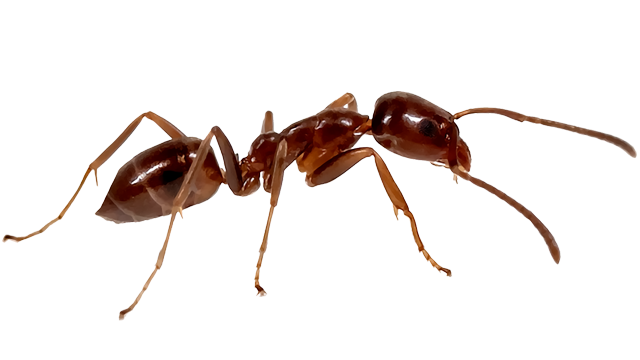Argentine Ant

Where you see one ant you are bound to see more. Their small size allows them to easily make their way into your home. Getting in through openings around water and electrical lines and cracks and crevices around the foundation. The scout ants, whose jobs is to locate food for the colony, will search your home high and low for any source of food. This could be sugar, meats, fruit or anything else that is available. One specific species of ant can cause great havoc and stress in your home.
Argentine ants are the biggest pest ant nuisance in the Bay Area and they are also detrimental to beneficial and native pollinators. They are a non-native invasive species of ant that has taken a few hundred years to form a supercolony that stretches 600 miles down the west coast.
Because we will never get rid of all of these ants, the next best solution is prevention by making your home less desirable to them.
Below is a profile of Argentine ants and ways to prevent this pest from infesting your property.
| Identification |
|
| Behavior |
|
| Habitat |
|
|
|
| Life Cycle (Gradual or Incomplete Metamorphosis) |
|
| Seasonality |
|
| Favorable Conditions |
|
| Health Concerns |
|
| Signs of an infestation |
|
What You Can Do To Keep Ants Away From Your Home
- Seal cracks and crevices around the exterior of the home with caulk that can provide entry
- Keep vegetation at least 1 foot away from the home and foundation to prevent access
- Remove or regularly tend to aphid-infested bushes and ripened fruit on trees
- Regularly clean the inside of garbage and recycling cans
- Install exterior bait stations where colonies are located
What You Can Do When Ants Are Inside Of Your Home
- Spray ant trails with soapy water solution and wipe up to remove
- Clean up spilled food and drinks
- Keep food in sealed containers
- Apply gel bait at entry points the ants are using to get inside of your home